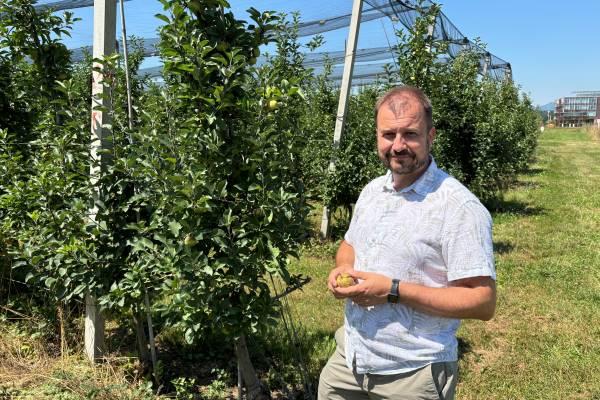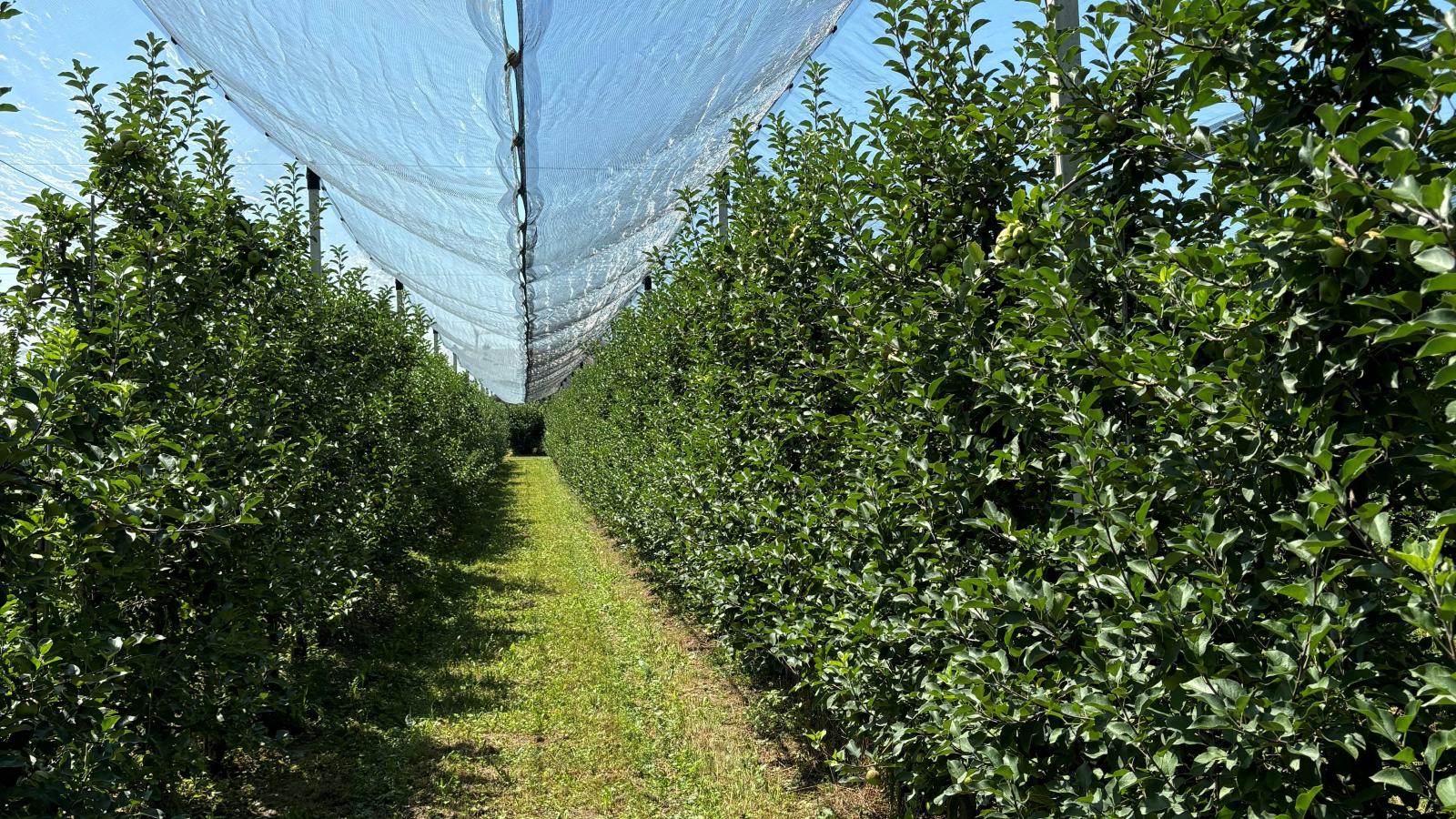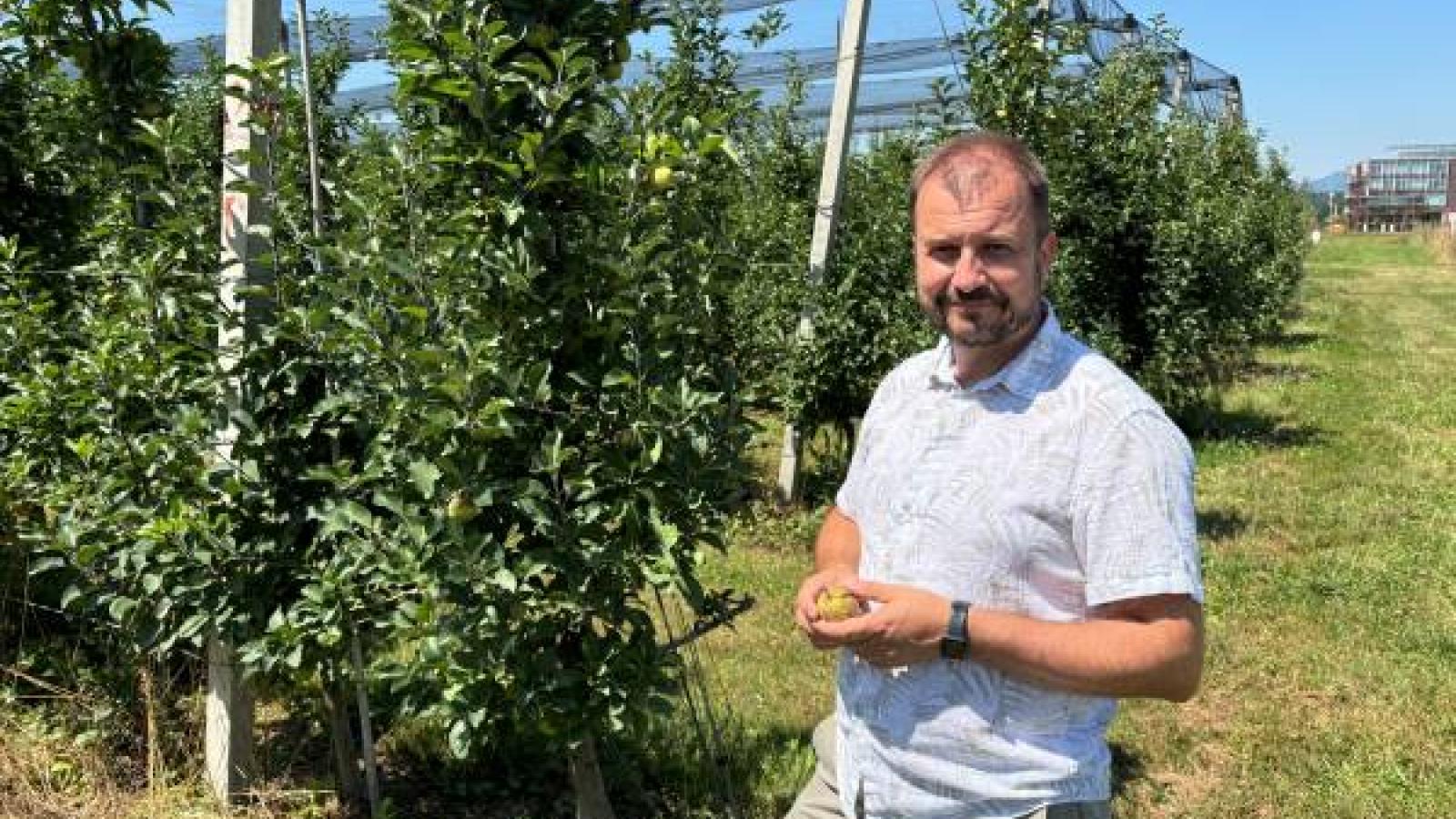Exploring the impacts of climate change on crop production research in Slovenia

In July 2024, Richard Pratt, Ohio State Emeritus Professor of Horticulture and Crop Science, engaged Slovenian scientists in a dialogue regarding the impact of climate change on crop production research. Pratt was selected to participate in the Slovene Research Initiative’s 2024 Faculty Exchange, in partnership with the Biotechnical Faculty of the University of Ljubljana and the Slovenian Academy of Sciences and Arts. Read about his experience below in his own words:
Thanks to the Slovene Research Initiative, I enjoyed an engaging visit with scientists from the University of Ljubljana Biotechnical Faculty. The topic of our interaction was the impact that climate change is having on crop production and associated horticultural research programs. The headline impacts of global climate change have been more intense thunderstorms, flooding, excessive heat, and drought. These stresses impact various regions and crops in different ways. How producers and researchers adjust to these challenges is a conversation that should be undertaken more widely−and this was an excellent opportunity to do just that.
We felt that it would be advantageous to focus on high value perennial crops because of the large economic investments associated with their establishment and management. Because of the high cost of production and consumer demand for quality, they are especially vulnerable to extreme biotic stressors created by climate change. The risk associated with their production has increased and the need to find solutions through research has intensified. Several perennial crops e.g. grapes, apples, and peaches, and a value-added product (wine) are important economically in both Slovenia and Ohio.
We each shared the background and current events surrounding the impact of climate change on fruit and wine production in our respective regions. We discussed how we are trying to address them in addition to ongoing research needs and funding constraints. I made a presentation on changing conditions in two climatically diverse states in the USA, Ohio and New Mexico. Rainfall extremes (too much in Ohio and too little in New Mexico), and excessive heat in New Mexico and record low temperatures in Ohio have already had major impacts. Each state has a growing wine industry and hopes for continued growth in an increasingly competitive market. Slovenia has experienced higher temperatures, earlier spring frosts, and hailstorms.
The phenology of vegetative growth, flowering, and fruiting have all been impacted by these stressors. Not all varieties respond in the same manner, so in coming years costly replanting to new varieties, or changes in production locations, may be required. Please see the photos of two apple cultivars….one heavily impacted by an early spring frost (Dr. Veberič is holding an affected fruit) and another in which the variety’s fruit escaped injury. The overhead protection is intended to protect against hail damage and provide partial shade (20%). Many orchardists have indicated that they can no longer obtain insurance against hail damage and these structures have become essential.
We agreed that one near-term action that would be beneficial would be the placement of weather instrumentation in fields that lack it. This would help provide better data for establishing cause-effect relationships between stress events and plant responses. Increased regional cooperation should help reduce costs for individual programs and provide more robust data regarding plant adaptation to more extreme environmental conditions. Broader varietal evaluation and utilization of genetic resources to improve host -resistance to biotic and abiotic stressors will require additional resources.
I am most appreciative of Dr. Drago Kunej of the Slovene Academy of Sciences and Arts, Dr. Denis Rusjan, Vice-Dean of the Biotechnical Faculty, and my primary host Dr. Robert Veberič of the Department of Agronomy, who facilitated my visit in a most congenial way.


